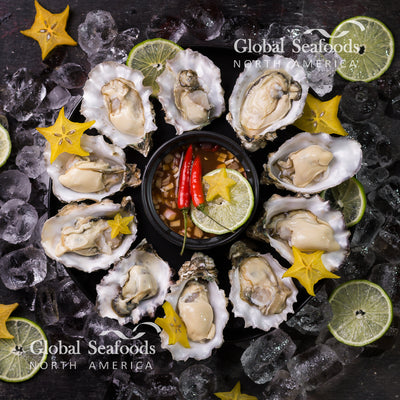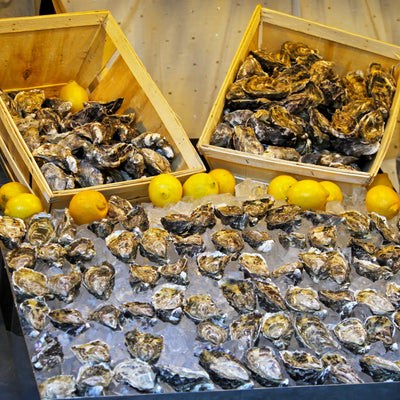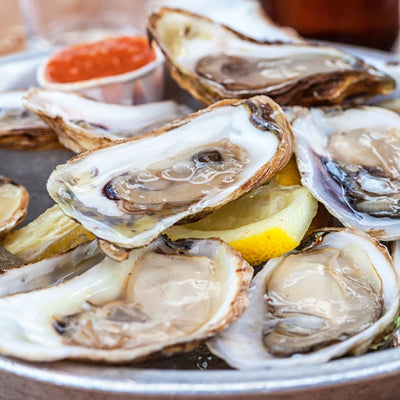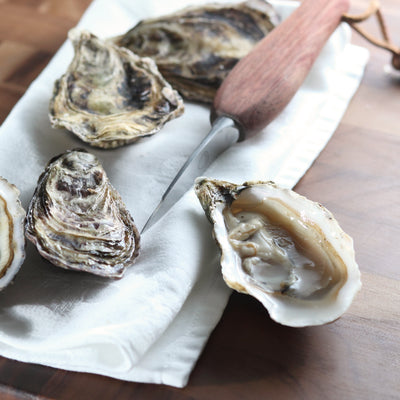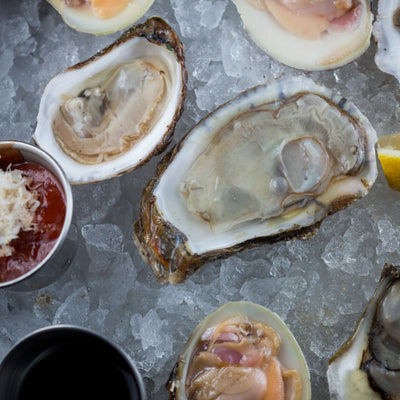Discover the Fascinating Anatomy of an Oyster: Nature’s Marvel

Anatomy of an Oyster: Nature’s Bivalve Marvel
Oysters have captivated humans for centuries, revered as a luxurious delicacy and a crucial player in maintaining healthy marine ecosystems. Their anatomy is a brilliant design, showcasing how these bivalves survive, adapt, and thrive in aquatic environments. Whether you're a seafood enthusiast or a nature lover, understanding the anatomy of an oyster deepens your appreciation for these fascinating creatures.
The Exterior: A Shield of Protection
The oyster’s shell serves as its armor, shielding it from predators and environmental stressors while housing its delicate inner anatomy.
1. Valves
Oysters have two shells, or valves, joined at one end.
- Bottom Valve: Cupped and thicker, this valve supports and cradles the oyster’s body.
-
Top Valve: Flatter and lighter, it helps enclose the oyster.
These two valves close tightly, providing a watertight seal that protects the oyster from threats.
2. Hinge
The hinge, located at the narrow end of the shell, acts as a flexible joint. This mechanism enables the oyster to open and close its shell efficiently.
3. Growth Lines
The ridges on an oyster's shell surface mark its growth over time, similar to tree rings. These lines tell the oyster’s age and environmental history.
If you're interested in premium oysters with pristine shells, explore our Carbajal Oysters.
The Interior: Anatomy for Survival
The interior of an oyster is a marvel of functionality, with every organ designed for specific purposes.
1. Mantle
The mantle is a thin layer of tissue lining the shell.
- Shell Formation: It secretes calcium carbonate, continually building and repairing the oyster’s shell.
- Pearl Production: In some species, such as Miyagi Oysters, the mantle forms pearls when irritants enter the shell.
2. Adductor Muscle
This powerful muscle holds the shell tightly closed, protecting the oyster from predators. When shucking an oyster, this is the muscle you cut to open it.
3. Gills
The feather-like gills have dual functions:
- Filtration: They filter oxygen and nutrients (plankton) from the water.
- Reproduction: Gills help release eggs or sperm into the water during spawning.
4. Digestive System
Oysters have a simple yet efficient digestive system that processes plankton:
- Mouth: Located near the hinge, it takes in filtered plankton.
- Digestive Tract: Includes the esophagus, stomach, and intestines, ending with waste expulsion.
To taste the delicacy of oysters firsthand, try our Willapa Bay Oysters.
Oysters in Their Ecosystem: Nature’s Engineers
Oysters play a vital role in maintaining marine ecosystems.
1. Filter Feeding
A single oyster can filter up to 50 gallons of water daily, removing pollutants and improving water clarity. This natural filtration helps maintain the health of aquatic habitats.
2. Habitat Creation
Oyster reefs provide shelter for a diverse range of marine species, from fish to crabs, boosting biodiversity and stabilizing coastlines.
3. Reproduction
Oysters reproduce by releasing eggs and sperm into the water. Fertilized eggs develop into free-floating larvae, eventually attaching to hard surfaces to grow into adult oysters.
Learn more about sustainable oyster farming with our Cliff Point Petite Oysters.
Nutritional Powerhouse: Health Benefits of Oysters
Oysters aren’t just delicious—they’re incredibly nutritious, packed with essential vitamins and minerals:
- Zinc: Supports immune health and energy production.
- Omega-3 Fatty Acids: Promote heart health and reduce inflammation.
- Protein: Builds and repairs muscle tissue.
- Vitamin B12: Vital for nerve health and red blood cell production.
For nutrient-rich oysters, check out our Tidepoint Oysters.
How to Serve and Enjoy Oysters
Oysters are incredibly versatile, whether you enjoy them raw or cooked.
1. Serving Tips
- Raw: Serve on a bed of crushed ice with lemon wedges and mignonette sauce.
- Grilled: Top with garlic butter and breadcrumbs before grilling.
2. Wine Pairing
Pair oysters with crisp, dry white wines like Sauvignon Blanc or a sparkling wine for a luxurious experience.
Elevate your oyster dishes with our Maine Oysters.
FAQs
Q: How can I tell if oysters are fresh?
Fresh oysters should have tightly closed shells and a clean, briny scent. Explore our Fresh Oysters Collection for high-quality options.
Q: Are oysters sustainable?
Yes, oysters are one of the most sustainable seafood choices. They improve water quality and serve as habitat builders in marine ecosystems.
Q: How should I store oysters at home?
Store live oysters in the refrigerator, covered with a damp cloth, and consume them within 5 days for the best taste.
Conclusion
Oysters are a marvel of nature, showcasing intricate anatomy and playing a vital role in marine ecosystems. From their ability to filter water to their culinary versatility, oysters offer a fascinating blend of ecological importance and gastronomic delight. Whether you're enjoying a platter of raw oysters or learning about their anatomy, these bivalves are truly a gift from the sea.
Ready to explore the finest oysters? Browse our collection:
Bring the taste of the ocean to your table today!
Also in News

How to Make Sea Bream Sushi With Dry-Aged Tuna & Crab Roll — Step-by-Step With Chef Joshua
A complete guide to making Sea Bream sushi at home, including filleting, curing, slicing, and building a Dry-Aged Tuna & Crab sushi roll. Chef Joshua shares professional tips for restaurant-quality results.

The Boiled Crab in Popular Culture: From Cajun Cuisine to Trendsetting Restaurant Phenomenon
From spicy Cajun-inspired seafood boils to hands-on dining experiences, The Boiled Crab has left a unique mark on popular culture. Discover its cultural roots and culinary influence.

Boiled Crab for Game Night: Everything You Need for a Perfect Seafood Party
Take your game night to the next level with a Boiled crab party. Learn the best recipes, cooking tips, and hosting hacks for a memorable seafood feast.

